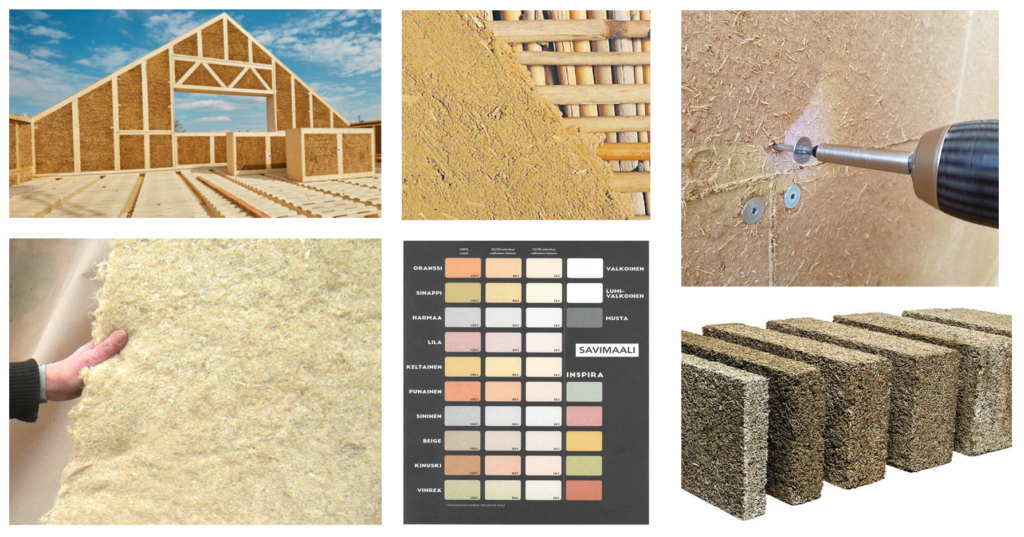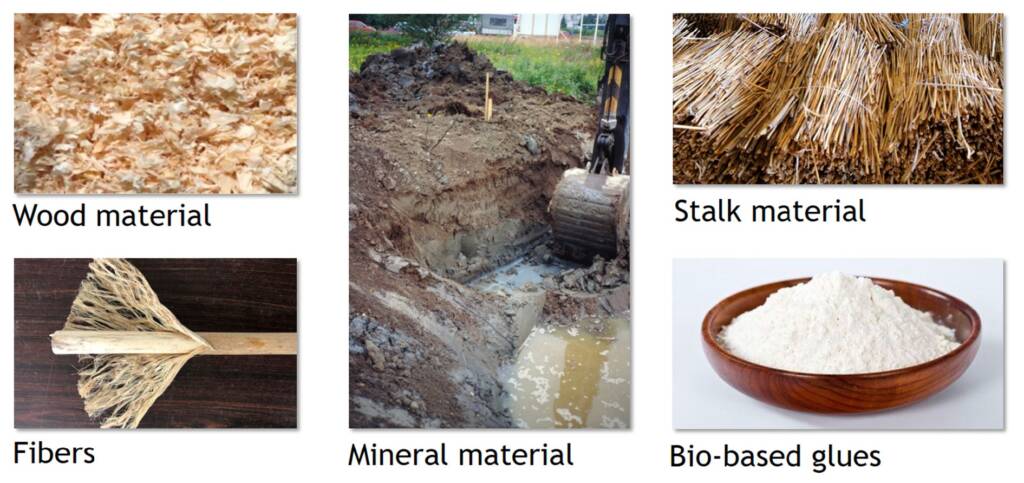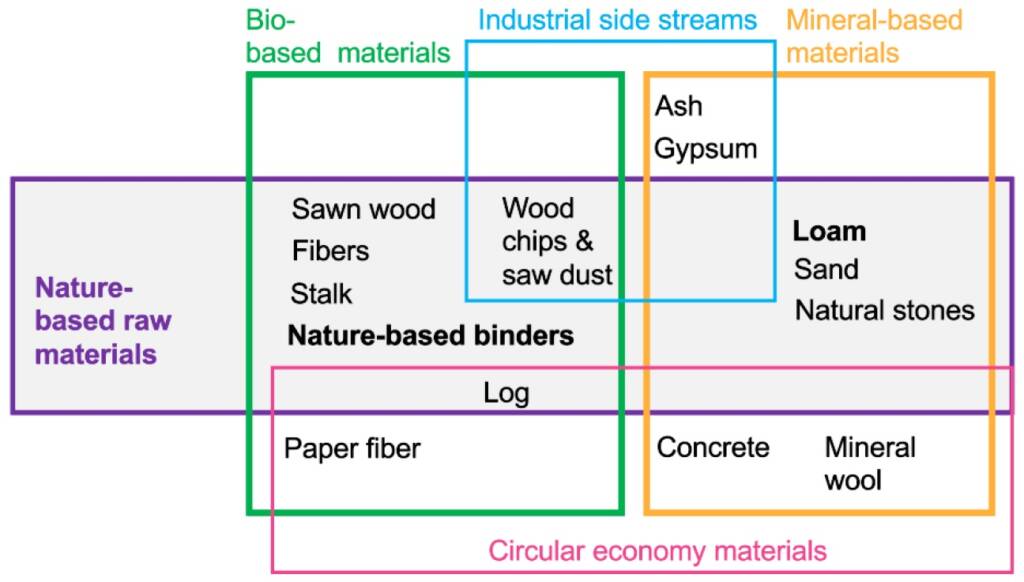
Definition of building materials
The construction sector globally produces around 35% of greenhouse gas emissions and up to 30% of waste. In accordance with the UN climate conference, the world should break away from the use of fossil fuels, in which case building materials should also be able to be produced fossil-free. This need is well met by Nature-Based building products, the production of which does not require high temperatures. The building products in question consist of renewable raw materials obtained from the surface layer of the earth and are easily returned to nature (picture below). These raw materials have been used in construction without problems for thousands of years, and today they are obtained from agriculture, forestry and ground digging.

The raw materials of NBB products share common areas with other low-carbon material groups, such as bio-based materials, circular economy materials and industrial side streams (picture below). In addition, the research results of these groups can be cross utilized.

The good compressive and bending strength of wood make it an ideal frame material, which other NBB products are well suited to complement. Thus, even lower-carbon structures can be created, enabling also healthy indoor air.
Challenges and strengths
In addition to their good aspects related to low carbon and healthy indoor air, structures consisting of NBB products have at least the following challenges. More research would be required to solve the issues described below.
- Fire safety. In many countries, fire standards limit the use of bio-based materials in the construction of apartment buildings. For this reason, several projects [1] [2] investigate the possibility of clay materials acting as fire protection cladding. However, the development work is in progress and companies interested in the production of the fire protection products in question would be needed for the development. The possibility of harmonizing European fire standards for NBB materials should also be investigated.
- Moisture safety. It should be better known how to ensure the moisture safety of bio-based building materials in different climatic conditions and to improve the related calculation [1] [2] [3]. In this way, the risk of microbial growth can be reduced, the measurement and classification methods of which still need to be developed and harmonized.
- Carbon footprint. The low-carbon nature of building materials in construction projects is becoming subject to regulation in many countries. However, according to current standards, the carbon stored by bio-based materials cannot be considered in this calculation. It is necessary to develop methods where the carbon contained in bio-based materials does not return to the atmosphere at the end of their life cycle [3]. In this way, it could be possible that NBB products could also utilize the negative carbon footprint in the same way as, for example, concrete products. Technical carbon sinks and long-term carbon storage methods may be well suited to this need. The development of the field’s standards in this subarea should be well known and the development of standards should be influenced.
Product mapping and innovation centre
In the Nature CO2 project [4], NBB products that are currently manufactured industrially in Europe were mapped (picture below), and based on this project, a preliminary study was also made [5] of the tasks and the conditions for the start of operations of the proposed Natural Building Innovation Centre. In addition, an international NBB information centre is being planned to promote research in the field and the domain name www.naturebasedbuilding.com has been reserved for this purpose.
References to Tampere University’s projects
[1] Stalk and Biosivu projects
[2] Ecosafe projects
[3] Luonteva project (Project page under construction)
Contact: NatureBasedBuilding@tuni.fi
